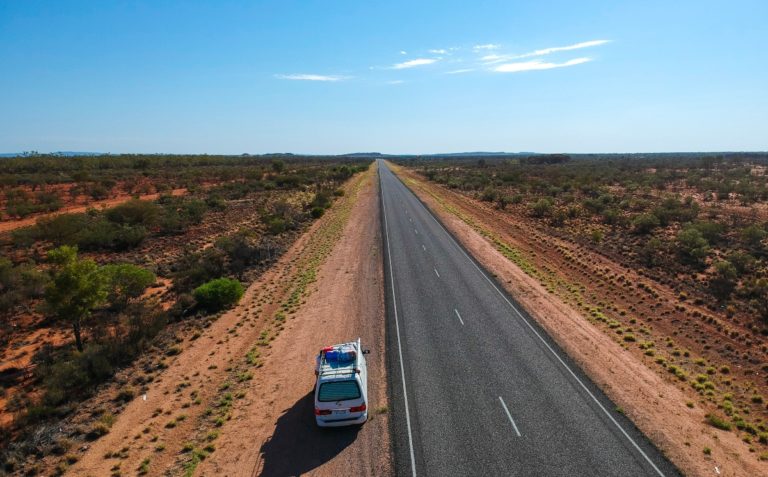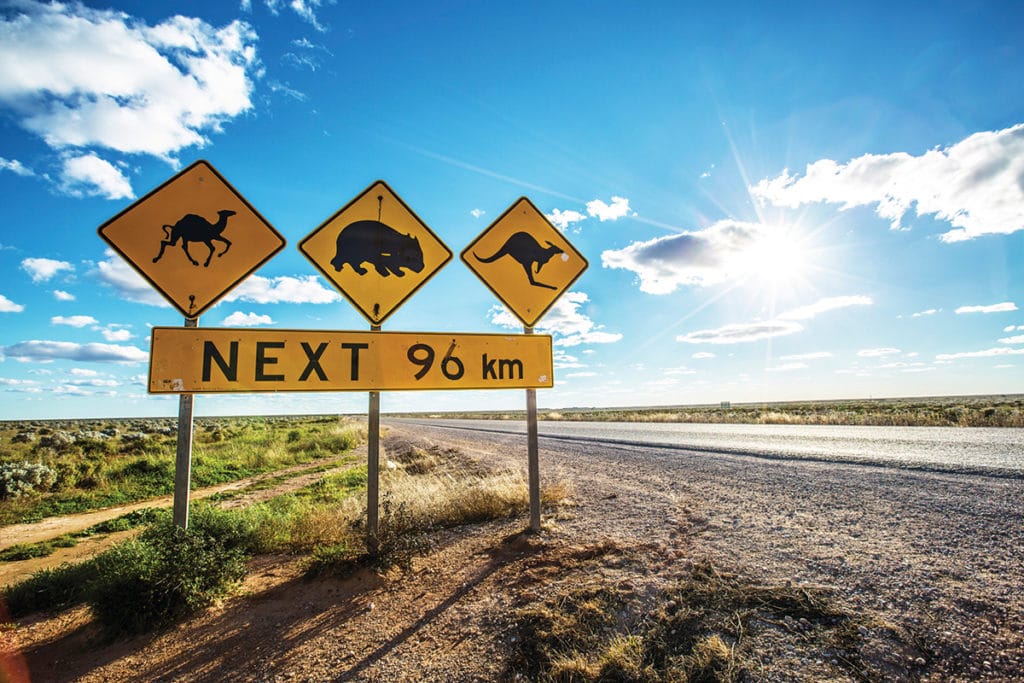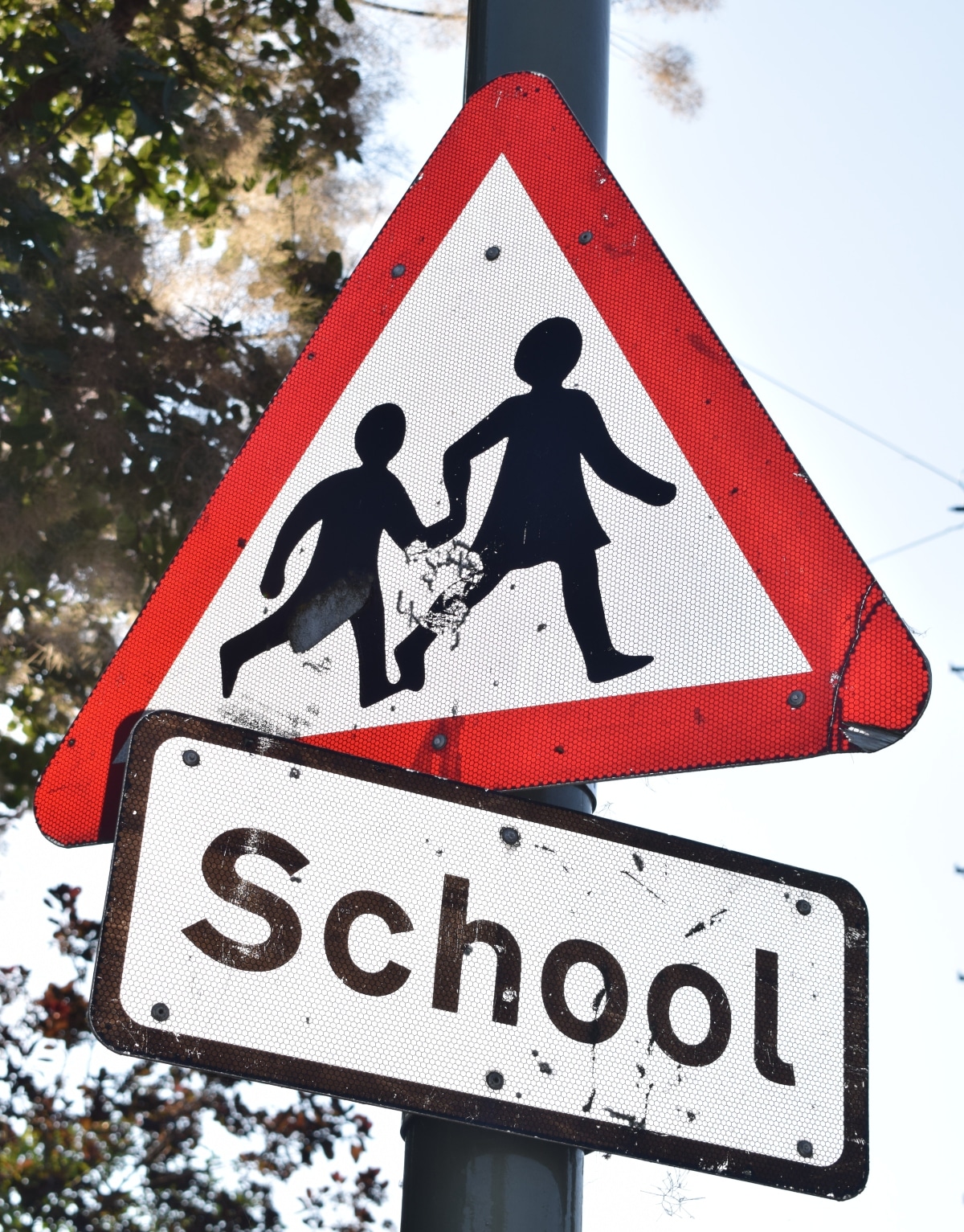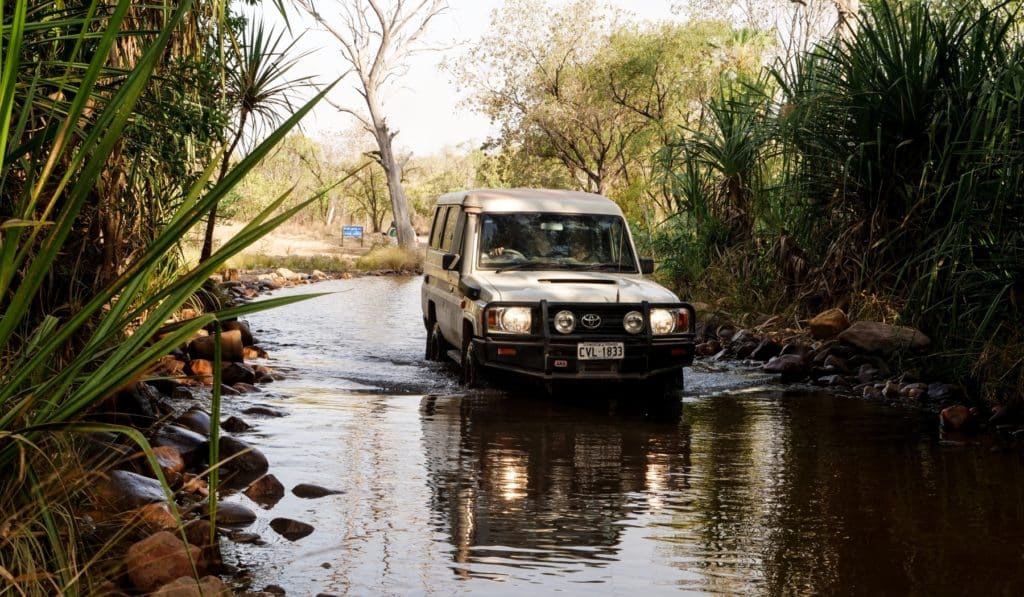
Whether you’re taking a long road trip, driving a tractor as part of your farm work or going to pick up friends from the airport, chances are you’re going to be behind the wheel at some point during your time in Australia. It’s therefore a pretty good idea to have some basic road safety tips under your belt. While many rules of the road Down Under will be the same as those in your home country, there are a few exceptions that come into play due to Australia being such a large and remote country. So even if you’re feeling fairly confident on the road here, it’s probably a good idea to cast your eyes over these important safety tips for driving in Australia – just to check you and your passengers are aware of them all.
Table of Contents
Drive on the left
In Australia, you drive on the left side of the road. This can be disorienting for visitors from countries where driving on the right is the norm. Pay close attention at intersections, roundabouts, and when turning, and always remember to keep left.
Watch out for wildlife
This is a key safety tip for driving Down Under, especially if you’re going to be on the road in more remote or rural areas. Australia has many large wild and farmed animals that love to wander across the road right in front of you. Australia’s diverse wildlife often ventures onto the roads, particularly at dawn, dusk, and night. Kangaroos, wombats, and emus are common hazards. If you see a wildlife crossing sign, reduce your speed and stay vigilant. If an animal is on the road, brake gently and avoid swerving to prevent losing control of your vehicle.

Be aware of school zones
Speed limits apply across Australia and should always be heeded, otherwise heavy fines apply. What you might not be aware of, however, is that some speed zones are temporary i.e. only enforced at particular times of the day. Areas around schools (school zones) are one of these places. 40kmph speed limits are generally imposed in these areas between 7:30-9am and 2:30-3:30pm (but this can vary, depending on the school). Flashing lights and signs will indicate to you where these zones are, but it’s best to be forewarned too.

Only stop for a photo where it is safe
This is a classic error for tourists! Given how beautiful the Australian landscape is, the temptation to snap photos as you’re driving along is hard to resist. However, this really isn’t a good idea, as stopping abruptly or in unsafe locations to pull out your camera can easily cause an accident. If you want to snap a pic, make sure you can pull over at a safe pace, in a reasonable location, and don’t endanger other drivers or passengers in the process.
Check road conditions in advance
As we all know, Australia is a country with extreme weather. This means that road conditions can change quickly, so checking the state of the roads in advance of your journey is essential. This is especially important if you’re going to be travelling in remote or rural areas, where flooding or bushfires can significantly impact your intended journey. Road condition reports can generally be found in Visitor Centres along your route, but the easiest way to find out is probably to check road reports online. Each state will have their own website, so make sure you get the details ahead of time.
Be Cautious in rural areas
In rural and outback regions, road conditions can vary significantly. Gravel roads, unsealed tracks, and narrow lanes are common. Drive at a safe speed, maintain a firm grip on the steering wheel, and be prepared for sudden changes in road conditions. Keep an eye out for road trains, which are large trucks with multiple trailers.
Take breaks to avoid fatigue
Fatigue is a major cause of accidents in Australia, particularly on long, monotonous stretches of road. Take regular breaks every two hours, switch drivers if possible, and avoid driving late at night. Utilize rest areas and enjoy the scenery to stay refreshed and alert.
Prepare for long distances
Australia is vast, and distances between towns and services can be considerable. Plan your route in advance, ensure your vehicle is in good condition, and carry extra fuel, water, and supplies, especially when traveling through remote areas. Inform someone about your travel plans and expected arrival times. If you do get into trouble, always stay with your vehicle and try to reach help via your mobile or satellite phone.

Stay on designated roads
When driving in remote or outback areas, stick to designated roads and tracks. Venturing off-road can be dangerous due to the lack of mobile coverage, rough terrain, and extreme weather conditions. Ensure your vehicle is suitable for the type of road you are traveling on, and always carry a map or GPS device.
As a country full of rugged and rough terrain, it’s good to be aware that a lot of Australian roads are not sealed. If you’re taking a long road trip, or driving in some of the more remote locations, then you will definitely want to plan your route in advance, making sure you know whether bitumen roads make up the entirety of your intended journey.

Be prepared for emergencies
Despite careful planning, emergencies can still occur. Equip your vehicle with a basic emergency kit, including a first aid kit, flashlight, spare tire, and tools. Have emergency contact numbers readily available and know the locations of the nearest medical facilities and service stations along your route.




























